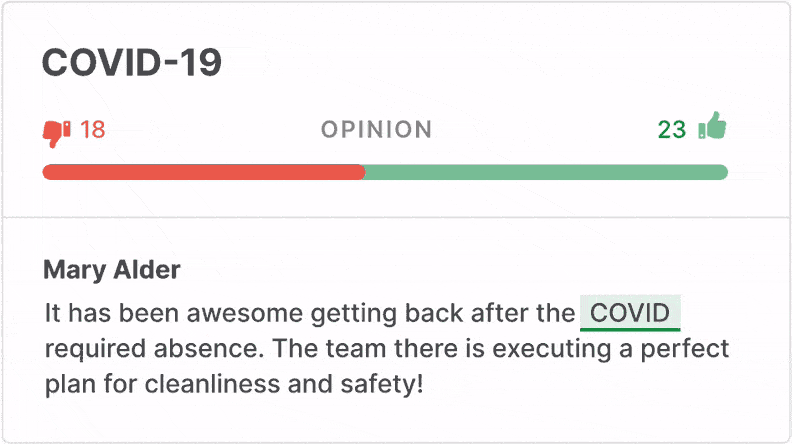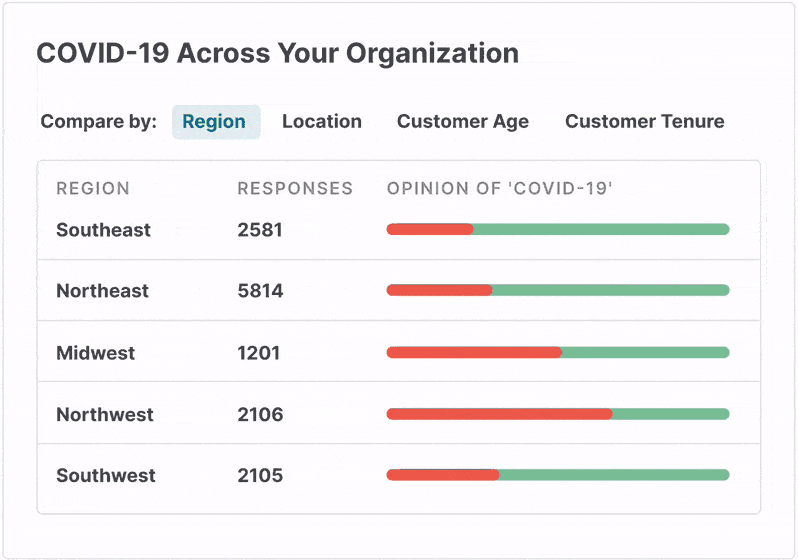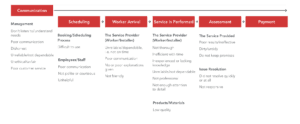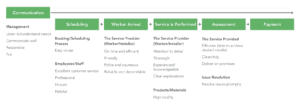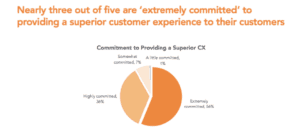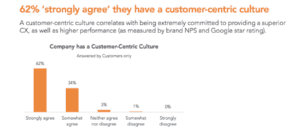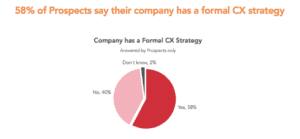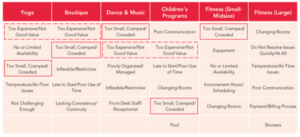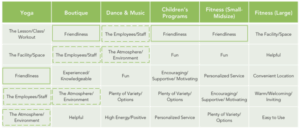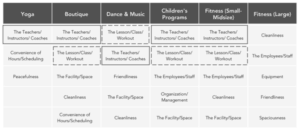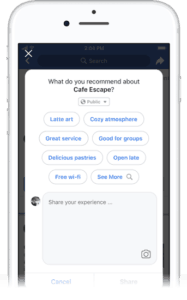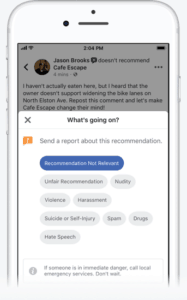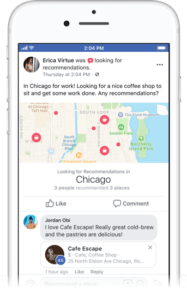Privacy Policy
Listen360 Privacy Policy
Last Modified: February 21, 2019
This Privacy Policy (“Policy”) discloses the privacy practices for www.listen360.com (including all sub-domains, the “Sites”), which are owned and operated by Listen360, Inc. (“Listen360,” “our,” “we” or “us”), as well as the use of the Listen360 web-based customer feedback system and services (collectively, the “Web App”). The Sites and Web App may be referred to as our “Services.” This Privacy Policy applies to our collection, use and disclosure of your information from our Services, including, without limitation, visitors to the Sites and unpaid users of the Services. This Policy is incorporated into our Terms of Service and Terms of Use.
- ACCEPTANCE
By accessing or using the Services, you warrant and represent that you accept the data practices and terms detailed in this Policy. If you do not agree with this Policy, please discontinue your access or use of the Services immediately. Please note that this Privacy Policy does not address the privacy practices of third parties, including those with whom we may share information as set forth below. Please review the privacy policies of any third parties before you disclose information to them.
- CHANGES TO THIS PRIVACY POLICY
We may revise this Privacy Policy from time to time and without prior notice to you. Changes may apply to any personal information we already hold about you and any new personal information collected after the Policy is modified. If we make changes, we will notify you by revising the “Last Modified” date at the top of this Policy which will always be at listen360.com/privacy-policy.html. By continuing to access or use the Services after those changes become effective, you agree to be bound by the revised Privacy Policy.
In addition, we may provide you with “just-in-time” disclosures or additional information about the data handling practices of specific parts of our Services. Such notices may supplement this Policy or provide you with additional choices about how we process your personal information.
- OUR RELATIONSHIP TO YOU
To understand Listen360’s data protection obligations and your rights to your personal information under this Policy, it is important that you identify which relationship(s) you have with Listen360.
- “Clients” refers to the registered users of the Listen360 Services including Clients with both paid and free or trial accounts, on whose behalf Listen360 solicits, collects and reports voluntary feedback provided to us by the Client’s customers with respect to the Client and its products and services. Authorized users of a Client’s Listen360 paid, free, and/or demo accounts are collectively and individually referred to as “Client Users.”Listen360 has a service provider relationship with Clients, and acts as a “data processor” when it stores, processes, transmits, or otherwise shares the consumer data it solicits and collects on behalf of the Client. Listen360 is in a “data controller” or direct relationship with Client Users.
- “Respondents” refers to individuals doing business with a Client utilizing Listen360 Services to solicit feedback from them. If you are a Respondent, Listen360 will collect and share your Personal Information solely on behalf of a Client, and solely based on the instructions provided by the Client (in conjunction with any instruction you may have the opportunity to provide at the time feedback is provided). Your agreement with the relevant Client should explain how the Client shares your Personal Information with Listen360 and other third parties, and if you have questions about this sharing, then you should direct those questions to the Client.
- “Visitors” refers to any individual accessing the Sites, as well as to any individual submitting Personal Information via the Sites for any reason, including but not limited to submitting a “contact us” or other online inquiry form, subscribing to a newsletter or blog, registering for a demo or webinar, or completing an online survey. Listen360 is in a “data controller” or direct relationship with Visitors.
Hereinafter we may refer to Clients, Respondents, and Visitors individually and collectively as “you.”
- COLLECTION OF PERSONAL INFORMATION
For purposes of this policy, “Personal Information” refers to any information about an identified or identifiable individual, including financial account information, Protected Health Information (PHI/ePHI), and any device information that may be linked with an identifiable individual. Any information that is anonymized or aggregated is no longer Personal Information and we may use it and share it for any reason, including using anonymized PHI/ePHI as authorized by HIPAA.
We collect Personal Information from and about Visitors to our Sites, we collect Personal Information from and about Clients and Client Users through our Sites and Services, and we collect Personal Information from and about Respondents and other individuals who do business with and provide feedback about Clients that use our Services.
Parts of our Sites are public, such as our blog, and any information that is disclosed on such public parts of our Sites may appear on search engines or other publicly available platforms, and may be “crawled,” searched and used by other Visitors, Clients, Client Users, Respondents, or other third parties. Please do not post any information that you do not want to reveal publicly.
In all cases where we share Personal Information with third parties, we will use a “minimum necessary” standard to disclose only that information required for satisfying the purpose of or performing the service for which the information is disclosed.
We generally collect and use information as follows:
Information from Visitors to the Sites
Information we collect from Visitors and when we collect it:
- Information You Provide to Us: We collect the Personal Information you provide to us when you submit a “contact us” or other online inquiry form, when you comment to a blog, or when you email, call, write, fax or otherwise initiate contact with Listen360. We record your contact information (name, address, phone number, and email address, and any other information you provide) in our CRM (Customer Relationship Management) system.
- Performance and Log Data: When you visit the Sites our servers (which may be hosted by a third party service provider) automatically record information created by your use of our Sites, which may include information such as, but not limited to, your IP address, browser type, operating system, command line information, diagnostic information related to the Services (i.e., crash activity reports), the referring web page, pages visited, location, your mobile carrier, device and application IDs, and search terms. Please read the “Automated Data Collection Technologies” section of this Policy for more information.
- Cookies and Similar Tracking Technologies: We use technologies like cookies, web beacons, pixel tags and other similar tracking technologies to gather information about how you are interacting with the Sites and Services, which may include identifying your IP address, browser type, and referring page. User sessions originating from an EU IP address are provided the opportunity to opt-out of accepting all non-essential cookies. Please read our Cookie Policy for more information.
How we use the information we collect from Visitors:
- To Provide Customer Service: When you contact us with information requests, newsletter subscriptions, questions, concerns, disputes, feedback, or any for other reason, we use your Personal Information to respond to you.
- To Engage in Marketing and Promotional Activities: We want to keep you updated about our products and services and we may use your Personal Information to send you promotional products and information about Listen360, the Services, and, as permitted by applicable law, on behalf of our parent company, subsidiaries, joint ventures, or other companies under common control with us (collectively, “Affiliates”) and partner companies. We may engage with you through marketing and promotional activities, including: sending you marketing communications; online surveys; alerting you about events, webinars, or other materials, including those of our partners and Affiliates; and updating you about our relevant products and Services. You can opt-out of our marketing activities at any time.
- For Research and Development: We typically use information collected via Automated Data Collection Technologies for functional purposes, to improve the performance and usability of our Sites, and to analyze how users interact with the Services, as described in “Automated Data Collection Technologies” (below). We may also create anonymous records from Personal Information for certain business purposes of Listen360 or its Affiliates, including but not limited to, reporting, directing future development efforts, and analyzing usage patterns so that we may enhance our Sites and Services.
- For Security Purposes: We process your Personal Information to enhance the security of our Services and to combat spam, malware or other security risks. Our processing includes monitoring your activities on our Services. Without processing your personal information for such purposes, we may not be able to ensure the security of our Services.
How we share the information we collect from Visitors:
Please read the “How We Share Information with Third Parties” section of this Policy for detailed information on how we share your Personal Information. We may share anonymized information with any third party for any reason.
Generally, we share a Visitor’s Personal Information as follows:
- Consent: When we have your consent to do so, we share your Personal Information as you have agreed.
- Referral Partners: When you complete an online inquiry form to which you were referred by a third party, any information collected on the Listen360 hosted online inquiry form may be shared with the referring party, and that referring party may use it for their own, non-Listen360 related, marketing communication programs.
- Marketing Partners. We share your Personal Information with third parties for marketing or advertising purposes, as permitted by law. For example, when you sign up to a webinar co-hosted by us and a third-party partner, we may share your personal information with the third-party partner.
- Service Providers: We share your Personal Information with our trusted service providers who provide certain services on our behalf. Our contracts dictate that these service providers only use your information in connection with the services they perform for us and in accordance with this Privacy Policy.
- Business Transfers: If we are involved in a merger or acquisition or some or all of our assets are acquired by another company, any Personal Information we possess may be a part of the assets transferred, and that company will possess any rights granted to us under this Privacy Policy. We will require that your Personal Information is protected in accordance with this Policy.
- Compliance, Safety, and Protection: Personal information we collect may be shared with law enforcement, public authorities, or other third parties for purposes of compliance with the law or in response to subpoenas.
From Clients and Client Users Utilizing the Sites and Services
Information we collect from Clients and Client Users and when we collect it:
- Account Information: We collect certain information from you when you register for an account with us, including registering for a free or demo account, such as your name, business name, phone number, fax number, e-mail address and business industry. To obtain a Listen360 paid account, we collect additional Personal Information, including but not limited to, financial account information for billing, information about your business (such as products and services offered, business hours, staff names and contact information, etc.) as part of the account configuration process that enables you to use the Services.
- Client User Information: When user accounts are created that enable individual Client employees to utilize the Services as Client Users we collect Personal Information for that user including name, phone number, email address, position, User ID and other required account security information.
- Financial Information: When you obtain a Listen360 paid account we collect information about your or your business’ payment methods, such as credit or debit card numbers, bank account numbers, and billing address.
- Customer Information: We collect Personal Information about your customers when you import or otherwise enter it into our systems as part of using the Services to request feedback from these customers about your products and services and other interactions with your company. We also collect Personal Information directly from your Respondents when they enter it into our systems as part of providing the feedback you requested via our Services.In cases where Clients import (directly or via a third-party integration) or enter a consumer’s Personal Information into our systems, they certify that they have received any required authorization to do so from the consumer, and that the disclosure does not violate the Health Insurance Portability and Accountability Act (“HIPAA”), the Personal Information Protection and Electronic Documents Act (PIPEDA), the EU General Data Protection Regulation (GDPR), or any other law or regulation.
- Geolocation Data: If you provide us with permission while accessing the Services via a web browser on a computer, laptop, or mobile device we may collect precise information about the location of your computer or device.
- Third Party Integration Data: If you integrate your Listen360 account with one or more third party systems for the purpose of importing customer data into Listen360 or for publishing feedback to third party sites (i.e. Facebook, Google, Twitter, Yelp, etc.), we collect information about your account with the third party which may include User IDs, passwords, API keys, single-sign-on credentials and other authentication data.
- Information You Provide to Us: We collect information that you provide to us, such as when you create an account, submit a support ticket, engage in an online Chat, email or call our sales or service team, when you comment to a blog, when you provide solicited feedback about Listen360, or when you email, call, write, fax or otherwise initiate contact with Listen360 regarding our Sites and/or Services. We record your contact information (name, address, phone number, email address, account name and number, User ID, and any other information you provide) in our CRM (Customer Relationship Management) and support ticketing system. We capture your solicited feedback in our house Listen360 account.
- Performance and Log Data: When you visit the Sites and/or utilize the Services our servers (which may be hosted by a third party service provider) automatically record information created by your use of our Sites and Services, which may include information such as, but not limited to, your IP address, browser type, operating system, command line information, diagnostic information related to the Services (i.e., crash activity reports), the referring web page, pages visited, location, your mobile carrier, device and application IDs, and search terms. Please read the “Automated Data Collection Technologies” section of this Policy for more information.
- Cookies and Similar Tracking Technologies: We use technologies like cookies, web beacons, pixel tags and other similar tracking technologies to gather information about how you are interacting with the Sites and Services, which may include identifying your IP address, browser type, and referring page. User sessions originating from an EU IP address are provided the opportunity to opt-out of accepting all non-essential cookies. Note that only essential functional non-marketing related cookies are utilized within the Listen360 application. Please read our Cookie Policy for more information.
How we use the information we collect from Clients and Client Users:
Generally, we collect and use information from you to provide, protect, and improve our Services, and to provide you with a personalized experience when using our Services. Some specific examples of how we may use your Personal Information include:
- To Provide You with the Services: We process your Personal Information when you sign up for and use our Services and when Client User accounts are created for authorized users of the Services. For example, we use your Personal Information to collect fees, to configure user accounts, to provide requested location services, to configure your account for sending feedback requests, publishing feedback, generating reports, enabling marketing activities, and other system related functions. Additionally, we use Personal Information about your customers, whether entered or imported by you directly or via a third party integration, or whether entered directly by a Respondent as part of providing solicited feedback. We share this Personal Information with our service providers and partners to the extent necessary to provide you with the Services.
- For Payment Processing: We use billing and financial information (bank account numbers/credit card numbers) to collect monthly subscription and usage fees as applicable.
- For Third Party Integrations: We use the third party account authentication data you provide to enable integrations between Listen360 Services and third party services for the purpose of customer data import and synchronization based on the integration configuration settings you provide. We use the third party account credentials you provide for social media and other sites to which you wish to publish the Respondent feedback you collect via the Services to publish that feedback on the selected sites.
- To Share Client Feedback: We may publish the feedback you provide to us about Listen360, our Sites and Services, on our social media sites and feeds (i.e. Facebook, Google, Twitter, Yelp, etc.).
- To Enhance Your Experience on the Services: We process your personal information to provide you with a unique and personalized experience on our Services. For example, we keep track of your preferences (e.g., display name, etc.), allow you to use social media plugins on our Services (e.g., Facebook, Google+, Twitter, etc.), and more. Without such processing, we may not be able to ensure your continued enjoyment of part or all of our Services.
- To Enforce Our Terms, Agreements and Policies: We process your Personal Information to actively monitor, investigate, prevent and mitigate any alleged or actual prohibited, illicit or illegal activities on our Services or violations of our terms and agreements with you. In addition, we may process your Personal Information to enforce our agreements with third parties and partners, and/or collect fees based on your use of our Services.
- To Maintain Legal/Regulatory Compliance and to Prevent Fraud: We process your Personal Information, and your customers’ Personal Information, whether entered or imported by you directly or via a third party integration, or whether entered directly by a Respondent as part of providing solicited feedback, to comply with certain legal obligations, such as the PCI-DSS, tax law, anti-spam laws, or as otherwise necessary to fulfill our other business obligations; to identify, prevent, and mitigate fraud on our Services; and/or to manage risk as required under applicable law.
- To Provide You with Service-related Communications: We will contact you to keep you updated about your account and the Services, such as to provide account-specific technical support, to send notifications of feedback received and other system activity, to email you any reports to which you subscribe, to notify you of changes to the Services and our policies, to provide security updates, or to provide other service-related information to you.
- For Security Purposes: We process your Personal Information to enhance the security of our Services and to combat spam, malware or other security risks. Our processing includes monitoring your activities on our Services and verifying your identity and access to the Services.
- To Provide Customer Service: When you contact us with information requests, newsletter subscriptions, questions, concerns, disputes, feedback, or any for other reason, we use your Personal Information to respond to you.
- To Engage in Marketing and Promotional Activities: We want to keep you updated about our products and services and we may use your Personal Information to send you promotional products and information about Listen360, the Services, and, as permitted by applicable law, on behalf of our partner companies and Affiliates. We may engage with you through marketing and promotional activities, including: sending you marketing communications; online surveys; alerting you about events, webinars, or other materials, including those of our partners and Affiliates; and updating you about our relevant products and Services. You can opt-out of our marketing activities at any time.
- For Research and Development: To offer you new, customized, or improved features on our Services, we process your Personal Information for research and development purposes. Your Personal Information helps us better understand how Clients, Client Users, and Respondents use and interact with our Services. Additionally, we typically use information collected via Automated Data Collection Technologies for functional purposes, to improve the performance and usability of our Sites and Services as described in “Automated Data Collection Technologies” (below). We may also create anonymous records from Personal Information for certain business purposes of Listen360 or its Affiliates, including but not limited to, reporting, directing future development efforts, and analyzing usage patterns so that we may enhance our Sites and Services.
How we share the information we collect Clients and Client Users:
Please read the “How We Share Information with Third Parties” section of this privacy policy for detailed information on how we share your Personal Information. We may share anonymized information with any third party for any reason, including sharing anonymized PHI/ePHI as authorized by HIPAA.
Generally, we share Client and Client User Personal Information as follows:
- Consent: When we have your consent to do so, we share your Personal Information as you have agreed.
- Service Providers: We share your Personal Information with our trusted service providers who provide certain services on our behalf, including but not limited to fraud prevention, business intelligence, customer relationship management, bill collection, payment processing, marketing, hosting, and other common technology services. Our contracts dictate that these service providers only use your information in connection with the Services they perform for us and in accordance with this Privacy Policy.
- Business Partners: We may share your Personal Information with our Affiliates as permitted by applicable law. We will require our Affiliates to comply with this Privacy Policy.
- Referral Partners: We may provide information, including Client and Client User Personal Information, to third party referral partners that work on behalf of or with us to provide some of the aspects of our services, to help us communicate with you, or to provide you with ancillary services offered by such referral partners. We may also receive information about you, including Personal Information, from our third party referral partners. However, these service providers and referral partners do not have any independent right to disclose this information (except to the same extent we would have a right to disclose that information under this Privacy Policy).
- Integrated Third Party Service Providers: When a Client configures an integration with a third-party service provider for the purpose of importing and/or synchronizing customer data, we share the information required (such as account authentication data, API keys, and configuration settings) required to establish and maintain the integration. All third party system integrations must be individually authorized by the Client.
- Social Media Sites: When a Client configures an account to post feedback, automatically or manually, to social media sites, we share the information required to post the feedback and the feedback content itself with the selected social media site(s). Additionally, Listen360 posts feedback received from its Clients to our Social Media sites and feeds (i.e. Facebook, Google, Twitter, Yelp, etc.).
- Business Transfers: If we are involved in a merger or acquisition or some or all of our assets are acquired by another company, any Personal Information we possess may be a part of the assets transferred, and that company will possess any rights granted to us under this Privacy Policy. We will require that your Personal Information is protected in accordance with this Policy.
- Compliance, Safety, and Protection: Personal information we collect may be shared with law enforcement, public authorities, or other third parties for purposes of: compliance with the law; cooperation with law enforcement or national security requirements; in response to subpoenas; responding to lawful requests; compliance with law or credit card rules; participation in a lawful federal, state or local government investigation; protecting the rights of Listen360, other Listen360 Clients, Client Users or Respondents, and third parties; or to investigate violations of or to enforce our Terms of Service and Terms of Use, or other policies or procedures.
From Respondents Using the Sites and Services
Any Personal Information we collect about a consumer or other individual, whether entered directly into our systems by the consumer as a Respondent, entered or imported by an authorized Client User, or imported by a Client -authorized third party integration, is used solely for the purpose of providing our Services and is not shared with third parties for any reason other than providing our Services, unless otherwise set forth herein.
We may share anonymized information with any third party for any reason, including sharing anonymized PHI/ePHI as authorized by HIPAA.
Information we collect from Respondents and when we collect it:
All collection of Personal Information from and about consumers is performed on behalf of the Client with which the consumer interacts or otherwise does business via our Services. Generally, we collect Respondent Personal Information as follows:
- Feedback: When you use our Services to submit feedback we collect information about you and your interactions with the Client on whose behalf we are soliciting the feedback, which may include your name, address, zip/postal code, email address, phone number, customer/account IDs, information about the Client’s products and services you purchased/utilized, answers to survey questions (including both checkbox/radio button selections and free text comments), IP address, and any other information necessary to process or authenticate the feedback submission. We securely store all personal information collected via our Services. In some cases the data we collect (or data you provide), or the combination of data we collect, may be classified as Protected Health Information (PHI/ePHI) under HIPAA.
- Geolocation Data: If you provide us with permission while accessing the Services via a web browser on a computer, laptop, or mobile device we may collect precise information about the location of your computer or device.
- Information You Provide to Us: While a Respondent’s direct relationship is with the Client, and all questions or concerns should be directed to that Client, in the event a Respondent does contact Listen360 directly we collect information that you provide to us, such as when you engage in an online Chat, email or call our sales or service team, when you comment to a blog, or when you email, call, write, fax or otherwise initiate contact with Listen360 regarding our Sites and/or Services. We record your contact information (name, address, phone number, email address, account name and number, User ID, and any other information you provide) in our CRM (Customer Relationship Management) and support ticketing system.
- Performance and Log Data: When you visit the Sites and/or utilize the Direct Payment Services our servers (which may be hosted by a third party service provider) automatically record information created by your use of our Sites and Direct Payment Services, which may include information such as, but not limited to, your IP address, browser type, operating system, command line information, diagnostic information related to the Services (i.e., crash activity reports), the referring web page, pages visited, location, your mobile carrier, device and application IDs, and search terms. Please read the “Automated Data Collection Technologies” section of this Policy for more information.
- Cookies and Similar Tracking Technologies: We use technologies like cookies, web beacons, pixel tags and other similar tracking technologies to gather information about how you are interacting with the Sites and Services, which may include identifying your IP address, browser type, and referring page. User sessions originating from an EU IP address are provided the opportunity to opt-out of accepting all non-essential cookies. Please read our Cookie Policy for more information.
How we use the information we collect from Respondents:
Generally, we collect and use information from Respondents on behalf of our Clients to provide, protect, and improve our Services. Some specific examples of how we may use your Personal Information include:
- To Solicit and Collect Feedback: We process a Respondent’s Personal Information when you use the Services to provide feedback about a Listen360 Client. For example, we use your Personal Information to send you feedback requests, to create reports for Clients that include your feedback, to publish your feedback on the Client’s social media sites, and/or if you instruct to your social media accounts/feeds, and other system related functions performed on behalf of Clients.
- To Send Client Messages: We use the email address you provide when providing feedback, or the email address provided for you by the Client, to send email messages to you on the Client’s behalf as directed by the Client.
- To Publish Feedback: Any and all content you provide as part of a Client Feedback survey, (including both checkbox/radio button selections and free text comments), may be made publically available by the Client on the Client’s website, the Client’s social media pages/feeds, or any other media of the client’s choosing. If you provide explicit permission to use your name at the time of submitting the Feedback, any and all content provided may be made publically accessible in conjunction with your name. If you do not provide such permission, any and all content may be made publically available, at the Client’s sole discretion, with only your first and last initial being used as an identifier.
Note that any free-text comments may be published verbatim (without any redactions) at the Client’s sole discretion, so you should not include any information in a free-text comments box that you do not wish to be openly published on the Internet and available to the general public.
- To Enhance Your Experience on the Services: We process your personal information to provide you with a unique and personalized experience on our Services. For example, we keep track of your preferences (e.g., display name, etc.), allow you to use social media plugins on our Services (e.g., Facebook, Google+, Twitter, etc.), and more. Without such processing, we may not be able to ensure your continued enjoyment of part or all of our Services.
- To Enforce Our Terms, Agreements and Policies: We process your Personal Information to actively monitor, investigate, prevent and mitigate any alleged or actual prohibited, illicit or illegal activities on our Services or violations of our terms and agreements with you. In addition, we may process your Personal Information to enforce our agreements with third parties and partners.
- To Maintain Legal/Regulatory Compliance and to Prevent Fraud: We process your Personal Information to comply with certain legal obligations, such as the PCI-DSS, tax law, anti-spam laws, or as otherwise necessary to fulfill our other business obligations; identify, prevent, and mitigate fraud on our Services; and/or to manage risk as required under applicable law.
- For Security Purposes: We process your Personal Information to enhance the security of our Services and to combat spam, malware or other security risks. Our processing includes monitoring your activities on our Services.
- To Provide Customer Service: While a Respondent’s direct relationship is with the Client, and all questions or concerns should be directed to that Client, in the event a Respondent does contact Listen360 directly with information requests, questions, concerns, disputes, feedback, or any for other reason, we use your Personal Information to respond to you.
- For Research and Development: To offer new, customized or improved features on our Services we process your Personal Information for research and development purposes. Your Personal Information helps us better understand how Clients and Respondents use and interact with our Services. Additionally, we typically use information collected via Automated Data Collection Technologies for functional purposes, to improve the performance and usability of our Sites and Services as described in “Automated Data Collection Technologies” (below). We may also create anonymous records from Personal Information for certain business purposes of Listen360 or its Affiliates, including but not limited to, reporting, directing future development efforts, and analyzing usage patterns so that we may enhance our Sites and Services.
How we share the information we collect from Respondents:
Please read the “How We Share Information with Third Parties” section of this privacy policy for detailed information on how we share your Personal Information. We may share anonymized information with any third party for any reason, including sharing anonymized PHI/ePHI as authorized by HIPAA.
Generally, we share Respondent Personal Information as follows:
- Consent: When we have your consent to do so, we share your Personal Information as you have agreed. Note that submitting any feedback form constitutes explicit consent to publically publish in any forum or format any and all of the information provided via the form (including both checkbox/radio button selections and free text comments) in conjunction with your first and last initials.
- Clients: When you provide feedback about a Client via the Services, we share all of the information you provide, including Personal Information, with that Client.
- Service Providers: We share your Personal Information with our trusted service providers who provide certain services on our behalf, including but not limited to fraud prevention, business intelligence, customer relationship management, payment processing, hosting, and other common technology services. Our contracts dictate that these service providers only use your information in connection with the Services they perform for us and in accordance with this Privacy Policy.
- Business Partners: We may share your Personal Information with our Affiliates as permitted by applicable law. We will require our Affiliates to comply with this Privacy Policy.
- Business Transfers: If we are involved in a merger or acquisition or some or all of our assets are acquired by another company, any Personal Information we possess may be a part of the assets transferred, and that company will possess any rights granted to us under this Privacy Policy. We will require that your Personal Information is protected in accordance with this Policy.
- Compliance, Safety, and Protection: Personal information we collect may be shared with law enforcement, public authorities, or other third parties for purposes of: compliance with the law; cooperation with law enforcement or national security requirements; responding to subpoenas, responding to lawful requests; compliance with law or credit card rules; participation in a lawful federal, state or local government investigation; protecting the rights of Listen360, other Listen360 Clients, Client Users, or Respondents, and third parties; or to investigate violations of or to enforce our Terms of Service and Terms of Use, or other policies or procedures.
- AUTOMATED DATA COLLECTION TECHNOLOGIES
When you access the Site or Services, or open one of our HTML emails, we may automatically record certain information from your system by using cookies and other types of click-stream tracking technologies. This “automatically collected” information may include Internet Protocol address (“IP Address”), a unique user ID, device type, device identifiers, browser types and language, referring and exit pages, platform type, version of software installed, system type, the content and pages that you access on the Sites and Service, the number of clicks, the amount of time spent on pages, the dates and times that you visit the Sites and Service, and other similar information. Depending on the law of your country of residence, your IP address may legally be considered personally identifiable information.
We typically use these cookies and similar technologies for essential and functional purposes (e.g. to maintain an active session), to improve the performance and usability of our Sites, and to analyze how users interact with the Services (e.g. to understand how long users stay on a page, how often they return, and how they arrived at our Site). On certain portions of our Sites we may collect data through these technologies for advertising, remarketing, or other similar purposes. Click-stream and related data is typically used for purposes of system administration, to improve our Services, for marketing and advertising-related purposes, and other similar uses.
- COOKIES AND SIMILAR TECHNOLOGIES
Certain portions of our Services may collect information via cookies, web beacons, pixel tags, and similar digital tracking technologies. These technologies can be used to operate, secure and provide our Services by collecting and analyzing information related to your use of the Services.
Generally, this information is collected when you request pages from our Services, and typically includes information such as the page served, the time, the source and type of browser making the request, the most recent page view, what you clicked on to arrive at our Services, the content you viewed on our Services, and other similar information relating to your use of our Services. In some cases, we may use cookies and similar technologies to collect personal information, or information that becomes personal information if we combine it with other information.
Listen360 utilizes only strictly necessary and functional cookies as part of its application Services, though other cookies including analytics and marketing related cookies are utilized on our public-facing websites and feedback forms. User sessions originating from an EU or UK IP address are provided the opportunity to opt-out of these analytics and marketing cookies.
For detailed information on the types of cookies used by Listen360, and your cookie management options, please read our Cookie Policy.
- THIRD-PARTY INTEGRATED SERVICES
Listen360 provides the ability to integrate the Services with select third party systems for importing and synchronization of customer information or publishing of feedback content (“Integrated Service(s)”). When a Client elects to establish a Listen360 connection with an Integrated Service, all data in your account may be shared with the Integrated Service (and all data in the Integrated Service account may be shared with Listen360) including personally identifiable information about your consumer and non-consumer customers and prospects. Listen360 does not control the policies or procedures of these Integrated Services, even though the integrations are provided through our Services, and Listen360 is not responsible for and has no control over how these third party Integrated Services function.
This Policy does not cover the collection or use of information, including consumer Respondent data, by Integrated Services, and Clients acknowledge that use and access to these Integrated Services is solely at their own risk; and Clients should consult the Terms and Privacy Policy for any Integrated Services accessed via a Listen360 account to determine how they store, process, transmit, and otherwise utilize and protect personally identifiable information and the personally identifiable information Clients provide about their customers, prospects, and other consumers. Clients ultimately can control which Integrated Services they choose to use with their Listen360 account, and are responsible for making sure that they do so in compliance with relevant privacy and data protection requirements.
Listen360 may provide the Personal Information we have collected from and/or about Clients to Integrated Services for the purpose of enabling them to market their products or services to you, if you have not opted out of these disclosures.
- HOW WE SHARE INFORMATION
Except as otherwise set forth in this Privacy Policy or in accordance with any request or consent you provide, Listen360 does not sell, share, or in any other way transmit Personal Information (names, address, phone numbers, financial account information, Protected Health Information (PHI/ePHI), etc.) submitted by Respondents to any persons or companies other than the Client on whose behalf the feedback was solicited. We reserve the right, however, to use and disclose anonymous information to third parties, at our discretion. Except as limited below, third parties may use information we share with them for any purpose for which we may use such information.
Personal Information we collect from Visitors, Clients, Client Users, and Respondents may be shared with service providers who provide certain services on our behalf, including but not limited to, identity verification, fraud prevention, business intelligence, customer relationship management, bill collection, payment processing, marketing, hosting, and other common technology services. Our contracts dictate that these service providers only use your information in connection with the services they perform for us and in accordance with this Privacy Policy, and you consent to our sharing with these parties by using our Sites and Services and accepting the terms of this Privacy Policy.
We may provide information, including Personal Information of Clients and Client Users to third party service providers and referral partners that work on behalf of or with us to provide some of the aspects of our services, to help us communicate with you, or to provide Clients with ancillary services offered by such service providers and referral partners. We may also receive information about you, including Personal Information, from our third party service providers and referral partners. However, these service providers and referral partners do not have any independent right to disclose this information (except to the same extent we would have a right to disclose that information under this Privacy Policy).
When you provide feedback about a Client via the Services, we share all of the information you provide, including Personal Information, with that Client.
When you submit any feedback form or survey, you are providing explicit consent to publically publish in any forum or format any and all of the information provided via the form (including both checkbox/radio button selections and free text comments) in conjunction with your first and last initials.
You hereby agree that we may share some or all of your Personal Information with our Affiliates. We will require our Affiliates to comply with this Privacy Policy. If our company or some or all of our assets are acquired by another company, any personal or other information we possess may be a part of the assets transferred, and that company will possess any rights granted to us under this Privacy Policy.
Finally, in extraordinary circumstances, we may share any personal or other information we possess, including but not limited to credit card and other financial account information and Protected Health Information (PHI/ePHI) when necessary or appropriate to: comply with the law; cooperate with law enforcement or national security requirements; respond to subpoenas; respond to lawful requests; comply with law or credit card rules; participate in a lawful federal, state or local government investigation; protect the rights of Listen360, other Listen360 Clients, Client Users, and Respondents, and third parties; or to investigate violations of or to enforce our Terms of Service or Terms of Use. However, in doing so, we may: (i) dispute demands for release to the extent we believe, in our sole discretion, are unwarranted, illegitimate or overbroad; and (ii) when we determine that it is necessary or appropriate, we will notify you of any requests for release.
In all cases where we share Personal Information with third parties, we will use a “minimum necessary” standard to disclose only that information required to perform the service for which the information is disclosed.
- DATA RETENTION
We will retain Personal Information for Clients and Client Users as long as you remain an active user of our Services and for a reasonable time thereafter, to serve the purpose(s) for which your Personal Information was processed, or as necessary to comply with our legal obligations, to resolve disputes, or to enforce our agreements to the extent permitted by law. While retention requirements can vary by country, we generally apply the retention periods noted below.
- Respondent Personal Information: We may store on behalf of Clients, for as long as a valid business reason exists, which may be indefinitely, any Personal Information, including but not limited to Protected Health Information (PHI/ePHI), collected about a consumer or other individual, whether entered directly into our systems by the Respondent via a feedback survey or any other means, whether entered or imported by an authorized Client User, or whether imported via a Client initiated integration with a third party service.Note that Clients control any consumer data we collect and process on their behalf and it is up to the Client to determine how long they will store their customers’ Personal Information in our systems.
- Your Interactions on Our Services: We may store any information about your interactions on our Sites or Services or any content created, posted or shared by you on our Sites or Services (e.g., pictures, comments, support tickets, and other content) for a period of time after the closure your account, which may be indefinitely, where a valid business reason exists for such storage such as to maintain the integrity of our systems and logs, for the establishment or defense of legal claims, audit and crime prevention purposes.
- Marketing: We store information used for marketing purposes indefinitely until you unsubscribe. Once you unsubscribe from marketing communications, we add your contact information to our suppression list to ensure we respect your unsubscribe request.
- Cookie Data: We retain any personal information collected via cookies, clear gifs, flash cookies, webpage counters and other technical or analytics tools up to one year from expiry of the cookie or the date of collection. Cookies owned by third parties may have other retention policies. See our Cookie Policy for more information.
- Telephone Records: As required by applicable law, we will inform you that a call will be recorded before doing so. Any telephone calls with you may be kept for a period of up to six years.
- Anonymized and Aggregate Data: We may retain anonymized and aggregate data indefinitely.
Upon termination of a contract with a Covered Entity, we will remove any ePHI stored in our systems on behalf of that Covered Entity where required by applicable law or the Business Associate Agreement with the Covered Entity; any PHI that we continue to maintain, will be stored and protected per the terms of our Business Associate Agreement with the Covered Entity.
- SECURITY
Listen360 has implemented measures designed to secure your Personal Information from accidental loss and from unauthorized access, use, alteration, and disclosure. All information you provide to us is stored on our thirty party vendor’s servers which utilize the most powerful security tools that exist in the marketplace.
The Listen360 Sites, including hosted web feedback survey forms, utilize secure SSL for all form data submissions in conjunction with a 256-bit GoDaddy certificate, but accommodate the majority of browsers at 128-bit encryption.
Listen360 does not directly store, process, or transmit bank account and credit card information. All payment processing, and collection of payment account data, is accomplished via integration with third-party service providers. These providers are contractually required to maintain compliance with the PCI DSS – Payment Card Industry Data Security Standards, and with all NACHA rules for ACH transaction processing. This includes secure transmission of credit card/bank account information, and encrypted storage of all payment account information.
Unfortunately, the transmission of information via the internet is not completely secure. Although we do our best to protect your Personal Information, we cannot guarantee the security of your Personal Information transmitted via our Sites or Services. Any transmission of Personal Information is at your own risk. We are not responsible for circumvention of any privacy settings or security measures contained on the Sites or the Services.
The safety and security of your information also depends on you. Where we have given you (or where you have chosen) a password for access to certain parts of our Sites or the Service, you are responsible for keeping this password confidential. We ask you not to share your password with anyone. Additionally, do not leave your device unlocked so that other individuals may access your device or account. Listen360 is not in control of your wireless connection or the devices you use to log into the Services, so you should make sure you trust the devices and connections you use to access the Services.
If you believe that you have experienced unauthorized access or use of your account, please contact us immediately at [email protected]
- CHOICES AND OPT-OUTS
You may opt-out of receiving marketing communications from us by following the opt-out instructions we include in such communications. Any communications from us that are not Service-related or transactional in nature will offer you an “unsubscribe” option so that you can opt out of receiving such messages.
To the extent required by law, you may choose to opt out of sharing with any other parties with whom we may share your personal information; however, you may be unable to use the Services or certain features if you wish to limit such sharing.
For individuals residing in Designated Countries, please refer to the “Designated Countries Privacy Rights” section below.
- ACCESSING, CORRECTING AND DELETING YOUR INFORMATION
Listen360 acknowledges the right of individuals to access their Personal Information. Note that Listen360 will require you to verify your identity prior to releasing any Personal Information.
Generally, you may access, correct, and/or delete your Personal Information as follows:
- Clients and Client Users may access and modify Personal Information and other account information using the account settings page. You may also access, change and modify information previously provided or collected by sending an email to Listen360 at [email protected] to initiate changes or modifications or to obtain a file for review.
- Clients may close their Listen360 account by contacting Listen360 Customer Care at 352.3000 or [email protected].
- Clients (and authorized representatives of Clients on behalf of Client Users) may request that their Personal Information be removed from all Listen360 systems. To have any Personal Information permanently deleted from Listen360 systems, you must make an official request in writing by emailing [email protected] and include the specific information that you would like permanently deleted from Listen360 systems. Note that if you request removal of your Personal Information you will no longer have access to any existing Listen360 account and will not be able to use any Listen360 product or service. Listen360 reserves the right to retain certain account information for its recordkeeping or compliance purposes.
- Visitors and any other individuals who have submitted Personal Information directly to Listen360 via the Sites may request that their Personal Information be removed from all Listen360 systems once per year. To have your Personal Information permanently deleted from Listen360 systems, you must make an official request in writing by emailing [email protected] and include specific information that you would like permanently deleted from Listen360 systems. Listen360 reserves the right to retain certain account information for its recordkeeping or compliance purposes.
- Respondents and other consumers who do business with Clients utilizing Listen360 Services can request that the Client provide you with access to the Personal Information Listen360 stores on its behalf, that it make changes to that Personal Information, and/or that the Personal Information be deleted from Listen360 systems. Listen360 cannot honor such requests directly from Respondents and other consumers, but will assist Clients with honoring them in a timely manner.
- If you are a patient, customer, or otherwise do business with a Covered Entity that utilizes Listen360 systems to obtain and store your Personal Information or to obtain and store feedback from you, you can request that the Covered Entity provide you with access to the Personal Health Information (PHI/ePHI) stored in Listen360 systems on its behalf, that it make changes to that ePHI, and/or that the ePHI be deleted from Listen360 systems. Listen360 cannot honor such requests directly from Respondents and other consumers, but will assist Clients with honoring them in a timely manner.
For individuals residing in Designated Countries, please refer to the “Designated Countries Privacy Rights” section below.
Note that use of the system delete function by a Client to remove any data related to Respondents or potential Respondents (such deleting a record or deleting feedback comments), or to remove any personal data about your company or its authorized Client Users, only restricts viewing that data from any system interface and prevents utilizing that data for any system function. It does not permanently delete the data from Listen360 systems. To have any personal data permanently deleted from Listen360 systems, you must make an official request in writing, to the address provided below or by emailing [email protected] that includes the specific information that you would like permanently deleted from Listen360 systems. Note that Listen360 will require you to verify your identity prior to executing any request to permanently delete data.
If you have any questions about your Personal Information or this policy, or if you would like to make a complaint about how Listen360 processes your personal data, please contact Listen360 by email at [email protected], or by using the contact details below.
- CALIFORNIA PRIVACY RIGHTS
If you are a California resident, you may request and obtain from us a list of what personal information (if any) we disclosed to third parties for direct marketing purposes in the preceding calendar year and the names and addresses of those third parties. California law provides that you have the right to receive the following information: (a) the categories of information we disclosed to third parties for the third parties’ direct marketing purposes during the preceding calendar year; and (b) the names and addresses of third parties that received such information, or if the nature of their business cannot be determined from the name, then examples of the products or services marketed.
You are entitled to receive a copy of this information in a standardized format and the information will not be specific to you individually. You may make such a request by emailing us at [email protected].
- A NOTE ABOUT CHILDREN
We do not intentionally gather information about individuals who are under the age of 18 or the age of majority in the country where they reside. If you are under the age of 18 or the age of majority you should not use our Services. If a Client, Client User, or Respondent submits personal information who is suspected of being younger than 18 years of age or the age of majority, we will require the Client, Client User, or Respondent to close his or her account and will not allow continued use of the Services. We will also take steps to delete the information as soon as possible, unless an exception applies. Please notify us if you know of any individuals under the age of 18 or age of majority using our Services so we can take action to prevent access to our Services.
- DESIGNATED COUNTRIES PRIVACY RIGHTS
This section only applies to users of our Service that are located in the European Economic Area, United Kingdom and/or Switzerland (collectively, the “Designated Countries”) at the time of data collection.
We may ask you to identify which country you are located in when you use some of the Services, or we may rely on your IP address to identify which country you are located in. When we rely on your IP address, we cannot apply the terms of this section to any individual that masks or otherwise hides their location information from us so as not to appear located in the Designated Countries. If any terms in this section conflict with other terms contained in this Policy, the terms in this section shall apply to users in the Designated Countries.
- Our Relationship to You. Listen360 is a data controller with regard to any personal information directly collected from Visitors, Clients, or Client Users of its Sites and Services. A “data controller” is an entity that determines the purposes for which and the manner in which any personal information is processed. Any third parties that handle your personal information in accordance with our instructions are our service providers and are “data processors.”Listen360 acts as a service provider to Clients and is a “data processor” with regard to any consumer Personal Information imported by Clients or Client Users into our systems via our Services—whether that consumer Personal Information is entered directly into our systems by the consumer as a Respondent, entered or imported by an authorized Client User, or imported by an authorized Client third party integration. As a “data processor” Listen360 does not have any direct control over the purposes for which and the manner in which any Respondent or potential Respondent personal information is processed; instead processing of this Personal Information is governed by data processing agreements between Listen360 and our Clients.
- Legal Bases for Processing Personal Information. Below is a chart indicating the legal bases we rely on as a data controller for processing personal information of Visitors, Clients, and Client Users.
| Purposes of Processing |
Legal Basis for Processing |
| – To Provide You with the Services
– To Enforce Our Terms, Agreements and Policies
– To Provide You with Service-related Communications
– For Security Purposes
– To Provide Customer Service
– Service Providers
– Business Transfers
|
Processing is based on our contract obligations or to take steps at the request of the individual prior to entering into a contract.
|
| – Joint Marketing Partners and Social Media Platforms
– To Enhance Your Experience on the Services
– To Conduct Research and Development
– Business Transfers |
Processing is based on our legitimate interest to better understand you, to maintain and improve the accuracy of the information we store about you, and to better promote or optimize our Services. |
| – To Maintain Legal/Regulatory Compliance and to Prevent Fraud
– Compliance, Safety and Protection |
Processing is necessary for compliance with our legal obligations, the public interest, or in your vital interests. |
- We will only contact individuals located in the Designated Countries by electronic means (including email or SMS) based on our legitimate interests, as permitted by applicable law, or the individual’s consent. When we rely on legitimate interest, we will only send you information about our Services that are similar to those which were the subject of a previous sale or negotiations of a sale to you or as otherwise permitted by applicable law.
If you do not want us to use your personal information in this way, or to disclose your personal information to third parties for marketing purposes, please go to the email settings for your account to opt out, click an unsubscribe link in your emails, or contact us at [email protected] You can object to direct marketing at any time and free of charge.
- Individual Rights. We provide you with the rights described below when you use our Services. We may limit your individual rights requests (a) where denial of access is required or authorized by law; (b) when granting access would have a negative impact on other’s privacy; (c) to protect our rights and properties; or (4) where the request is frivolous or burdensome.
If you would like to exercise your rights under applicable law, please contact us at [email protected]. We may seek to verify your identity when we receive an individual rights request from you to ensure the security of your personal information.
- Right to Withdraw Consent. For any consent-based processing of your personal information, you have the right to withdraw your consent at any time. A withdrawal of consent will not affect the lawfulness of our processing or the processing of any third parties based on consent before your withdrawal.
- Right of Access. Upon your request, we will provide you with a copy of your personal information in our files without undue delay and free of charge, unless we are permitted by law to charge a fee. Your access may be limited to the extent it would adversely affect the rights and freedoms of other individuals.
- Right to Rectification (or “Correction”). You may request to correct or update any of your personal information in our files. We may provide you with the ability to update some or all of your personal information directly via the Services.
- Right to Erasure (or the “Right to be Forgotten”). Upon your request, we will erase any of your personal information in our files that: is no longer necessary in relation to the purposes for which it was collected or otherwise processed; was collected in relation to processing that you previously consented to, but later withdrew such consent; or was collected in relation to processing activities to which you object, and there are no overriding legitimate grounds for our processing.
- Right to Restriction. You have the right to restrict our processing of your personal information where one of the following conditions applies:
- You contest the accuracy of your personal information that we processed. If you restrict processing based on this condition, you may experience an interruption of some or all of the Services during the period necessary for us to verify the accuracy of your personal information;
- The processing is unlawful and you oppose the erasure of your personal information and request the restriction of its use instead;
- We no longer need your personal information for the purposes of the processing, but it is required by you to establish, exercise or defense of legal claims; or
- You have objected to processing, pending the verification whether the legitimate grounds of our processing override your rights.
During the time which restriction of processing applies, we will only process your restricted personal information with your consent or for the establishment, exercise or defense of legal claims or for the protection of the rights of another natural or legal person or for reasons of important public interest. We will inform you if or when the restriction is lifted.
- Right to Object to Processing. You may object to our processing at any time and as permitted by applicable law if we process your personal information on the legal bases of: consent; contract; or legitimate interests. We may continue to process your personal information if it is necessary for the defense of legal claims, or for any other exceptions permitted by applicable law.
- Right to Data Portability. If we process your personal information based in a contract with you or based on your consent, or the processing is carried out by automated means, you may request to receive your personal information in a structured, commonly used and machine-readable format, and to have us transfer your personal information directly to another “controller,” where technically feasible, unless exercise of this right adversely affects the rights and freedoms of others. You right to data portability only applies to personal information provided by you to us.
- Notification to Third Parties. When we fulfill your individual rights requests for correct (or rectification), erasure or restriction of processing, we will notify third parties also handling the relevant personal information unless this proves impossible or involves disproportionate effort. Upon your request, we will identify such third parties.
- Data Protection Officer or Member Representative. If you have questions, you may reach our Data Protection Officer at:
Listen360 Data Protection Officer
11605 Haynes Bridge Rd, Suite 150
Alpharetta, GA 30009
[email protected]
- Right to Lodge Complaint. Individuals with inquiries or complaints regarding our Privacy Policy should first contact us at [email protected]. You also have a right to lodge a complaint with a competent supervisory authority situated in a Member State of your habitual residence, place of work, or place of alleged infringement.
- CONTACT US
Listen360, Inc.
Attn: Information Security/Data Protection Officer
11605 Haynes Bridge Rd, Suite 150
Alpharetta, GA 30009
[email protected]

